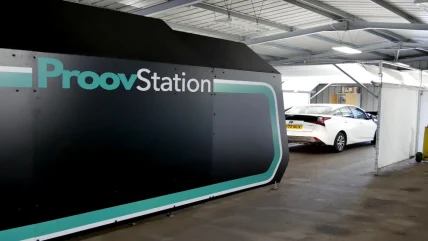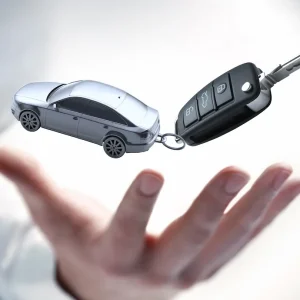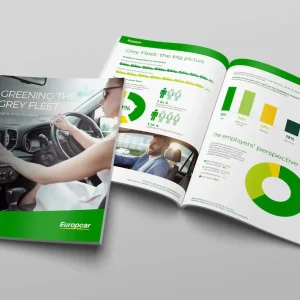
Please forgive us for writing about the most notorious buzzword of our times, but please also trust that we are doing so because this corner of the industry is experimenting with and applying artificial intelligence in ways that could change how certain parts of it operate.
Remarketing companies have started to get serious about AI and its application to vehicle appraisals, broadly to make the process speedier, more thorough, and to remove the earliest and the most remedial aspects of inspection from human assessors.
In January, auction firm Aston Barclay announced what it claimed was a UK remarketing first with the rollout of AI-powered inspection gantries at its Wakefield and Donington Park sites. The gantries were supplied by Proovstation – which says it operates more than 200 stations in 12 countries – and take 2-300 photos of a vehicle as it drives through. They entered service after a six-month trial and are said to apply more than 25 algorithms to identify different types of observable damage, such as chips, dents, scratches, and tyre wear down to millimetres.
Data is allegedly collected in 90 seconds and transmitted to a human vehicle appraiser’s mobile device. It is then transferred to the firm’s damage appraisal software, which calculates repair costs and assigns a National Association of Motor Auctions (NAMA) grade – the industry-standard one-to-five vehicle condition metric.
The company says it is primarily using the gantries to carry out the first stage of inspections, so human assessors – who remain part of the process – already have an idea of what is wrong with the vehicle before they inspect it.
“Where before, an inspector would have gone up to a car completely fresh and done a full appraisal, this. has done a lot of that first detection for us,” says Aston Barclay’s head of change delivery, Mark Wilson, “it shows areas of potential damage that we just need to validate rather than do a fresh inspection.”
Wilson says the firm does not plan to reduce its headcount by automating part of the appraisal process but hopes to use AI as an efficiency tool to avoid hiring more staff as the business grows.
“What we’d like to do is grow our volume but not necessarily recruit more people to meet that demand,” he explains, “historically, what everybody has always done is throw people at the problem – get more cars, get more people. We want to see if we can really leverage and utilise emerging technologies such as this to make sure we have the right people in the right places, but we don’t have an oversized headcount.”
He says that the firm has used the tech to get ahead with tactical refurbishments, identifying defects early on and offering to carry out limited repairs so vehicles meet a more marketable NAMA grade – say, a smart repair to bump it from a grade four to a grade three – and adds that the gantries’ primary purpose has been to improve consistency.
“There’s always subjectivity when a human looks at a car and then another human looks at the same car. What this does is deliver consistency. It’s the same machine, in the same temperament and the same environment, the same lighting, so the quality control validation is removing some of the subjectivity from the process. [and] it’s made [calculating NAMA grades] faster for us.”
In addition to remarketing, the gantries have been applied to other motor industry sectors outside the UK, including rental, retail, and tyre fitters.
“We mainly install them in big [rental] branches – airports, train stations,” says Proovstation’s chief sales officer, William Balas, “we usually install at least two units – one at the exits, one at the return [entry]. When the vehicle leaves the site, we take images and store them in the cloud – that’s it. When the vehicle returns, we scan again, and we run the algorithms.
“The main advantages are transparency, because we give the customer access to all the pictures taken during the scan, so they can navigate to them instead of taking their phone and filming the vehicle. the other is that, instead of waiting for someone to inspect the car with you, you just drop off the key.”
The tech has been applied similarly at dealers and tyre fitters outside the UK – as a transparency tool for drop-offs and collections – but also as a sales technique to immediately identify additional damage that could be repaired when a vehicle arrives for scheduled maintenance work, which the retailer or tyre fitter can offer as an upsell.
Big remarketing industry players are also dabbling with AI. Anecdotally, we understand BCA is in the throes of extensive trials, while Manheim owner Cox Automotive told us it was testing a variety of products in different markets.
Cox’s insight director, Philip Nothard, believes the tech will increasingly become part of remarketing, but thinks it needs to prove its mettle before it is rolled out en masse.
“The question is, does the inspector have to clarify what the AI technology has identified?” he says, “that’s where the trial process comes in – you’ll have to test how many times your vehicle goes through. Does it pick up more than the inspector would pick up, or does it pick up less? Probably the big debate is about efficiency – instead of appraising 200 cars in a day, you get to appraise 300, because you’ve saved five minutes at the start of each one.”
He also points out the limitations of a purely visual inspection, which does not account for, say, audible factors. “Is there something mechanical that will actually add to the problem? I don’t know what the answer is, but. the AI might say, ‘it needs two wheel refurbs and a bonnet polish,’ therefore it goes into that line for [repairs] because there’s no point going to the second appraiser. But if you have an engine knocking, you can’t take a photo of that.”
Nothard thinks AI appraisals have potential earlier in the remarketing process when vehicles are still with fleets. The same tech, made available to drivers via their phones, could facilitate more consistent inspections and damage reporting before the vehicle is collected.
Pave does exactly that. Launched in the UK in 2020, it facilitates what is often referred to as ‘upstream remarketing’ by sending drivers a text message with a link to a webpage, which prompts them to photograph key areas of the vehicle and conduct their own early inspection. They are shown a short descriptive video, then instructed to take 13 snaps, which include the numberplates, the odometer, and certain areas of the vehicle to determine its condition.
“Self-appraisal. is consistent and anyone can use it,” explains head of UK sales, Phil Deegan, “companies are now saying, ‘actually, if I have that information. I know that that vehicle’s got to go to auction,’ or ‘I can sell that direct from Mrs Miggins’ doorstep, because that’s a grade one car’.”
The firm is keen to stress that the service does not operate via an app, because it believes drivers just do not want to download one for what could well be a single use. It says it provides users with real-time feedback to make sure the pictures are up to scratch, and claims the results are 80% accurate. It is aiming to improve that, but reckons they are already more consistent than those generated by humans. Deegan adds that the tech also provides leasing companies with recourse in the face of disputed end-of-contract damage charges.
“Even if the driver doesn’t use it, the leasing company can demonstrate, beyond a shadow of a doubt, that it has made every effort and acted reasonably in contacting Mrs Miggins and advising her to do these things. If that person then doesn’t and they say, ‘oh, we’ve had a really bad experience at the back end,’ then the leasing company says, ‘what more do you want me to do?'”
Supported by:






